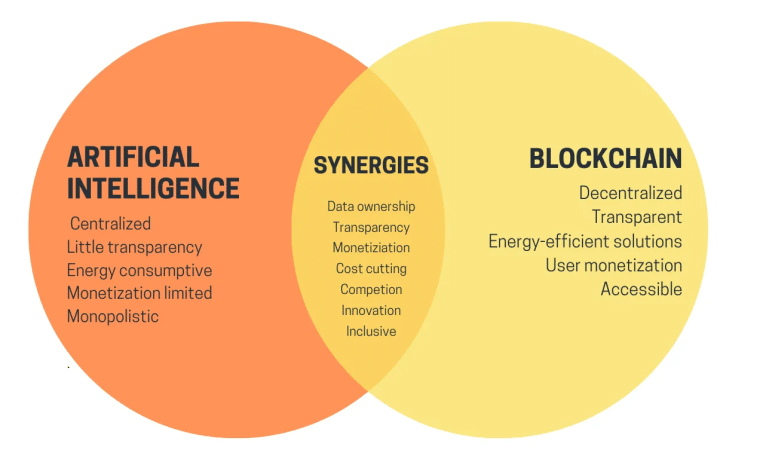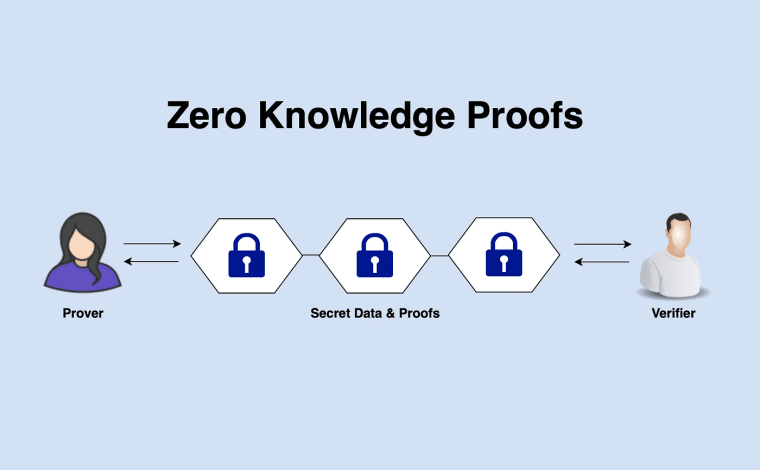The pioneering co-founder of Ethereum, Vitalik Buterin, penned an extensive open letter examining the intersections between artificial intelligence (AI) and blockchain technology, predicting innumerable potential. While acknowledging that some promising synergies have emerged, Buterin also outlines significant risks that demand a cautious approach.
In his January 30th blog post, Buterin classifies AI blockchain applications into four central categories that he thinks will dominate the space based on their relationship to decentralized protocols:
- AI as a Player
- AI as an Interface
- AI as Protocol Rules
- Training AI as the Objective
If you have ever read any of Buterin’s blog posts, you’d know that he is a brilliant mind with much to say about the future of blockchain technology. That’s why the crypto community is listening closely to his predictions and ideas surrounding the intersection of his bread and butter with AI.

Let’s dig deeper into the four avenues explained by Buterin to understand his views about how the two technologies can be used in combination, to which extent, and if the benefits exceed the inherent risks for each practical application.
AI Acting as a Player Within Blockchain Protocols
The first category presented by Buterin consists of AI agents participating directly within blockchain mechanisms like prediction markets, decentralized exchanges, and autonomous financial transactions.
Buterin sees immense viability here, explaining that arbitrage bots have actively navigated on-chain liquidity and markets for years already. However, capabilities can expand dramatically thanks to modern large language models (LLMs) like ChatGPT.
Having AI agents participate in prediction mechanisms, even at a microscopic scale, unlocks powerful coordination primitives. For example, analyzing social media content, stock price movements, scam detection, and more could all be outsourced to AI bots that have been adequately prepared for them. This information can be relayed to trading bots which aim to make a profit off of that information.
Theses AI agents could provide valuable informative signals, even when their individual financial incentive seems tiny.
Buterin believes that prediction markets can only reach their full potential if ubiquitous AI participation is possible. He states that “humans will not care enough to bid, but thousands of AIs will easily swarm all over the question and make the best guess they can”.
This also enables autonomous agents to better cooperate through crypto payments and smart contracts. By aligning incentives, complex tasks can be optimized by AI far beyond human capabilities.
However, Buterin cautions that over-dependence on AI agents and oracles poses risks. If flawed models are exploited, it could compromise critical on-chain services and lead to tremendous financial losses. Judging by the frequency of AI hallucinations in modern day LLMs, there’s no doubt that they would make all kinds of mistakes, requiring robust security measures.
AI Assisting Users as an Interface
The second primary area covers AI acting as an interface between users and blockchain applications. AI could bridge knowledge gaps for users, explaining concepts in plain language, safeguarding them from errors, and detecting potential scams.
Buterin points to existing crypto wallet plugins like MetaMask’s scam detection feature as a basic example. However, he believes that LLMs like ChatGPT usher far greater possibilities for user-facing assistance.
For instance, personalized AI tutors could walk users through executing complex signatures, smart contract interactions, and DeFi strategies tailored to their level of knowledge and understanding of the blockchain space. Beyond security, AI unlocks superior user experiences that could effectively lower adoption barriers – a hurdle that the blockchain industry still needs to overcome for mainstream adoption.
Projects like LangChain are already pioneering LLM-based crypto wallet interfaces. However, while admitting the vast potential, Buterin warns that pure the sole on AI interfaces amplifies other risks given that models still have systemic flaws. Hence, AI should complement rather than fully replace conventional UI/UX design for now.
From @LangChainAI: an open source, Python-based project where developers can create their own OpenAI CustomGPTs-esque “hey users, build your own AI gpts via a user interface.”https://t.co/BhCbbtnQIy
Your users can build…
— Nat Guy (@natguy) February 1, 2024
Additionally, fraudsters could study the AI assistant’s source code to optimize scams and exploit vulnerabilities. Restricting query volume and combining approaches can mitigate such cybersecurity issues. Overall, AI interfaces provide immense upside but require thorough safety barriers.
Using AI to Enforce Blockchain Protocol Rules
This application category is where Buterin urges maximum caution: incorporating AI directly into the consensus rules and governance protocols of blockchains.
The concept aligns with the growing political appetite for “AI judges” and similar automation. However, adversarial exploits become extremely concerning in an open and high-value environment like crypto.
For example, if an AI oracle governed certain operations of a multi-million dollar DeFi protocol, malicious actors could probe it for weaknesses and launch tailored attacks leading to disastrous losses. AI models may be so complex that they have more vulnerabilities than simple, straightforward code.
Buterin explains that closed AI models enable “security through obscurity” but offer no transparency or assurance of impartial conduct. Meanwhile, open AI code allows adversaries to study and optimize attacks.
Hence, high-stakes blockchain integrations demand innovative techniques to embargo models while still proving correctness. Cryptographic methods like zero-knowledge proofs (ZKPs), multi-party computation (MPC), and homomorphic encryption introduce overhead tradeoffs but may provide paths to secure encapsulation.

Equally vital is shielding training data from corruption while preserving confidence in the broader ingestion pipeline. Buterin believes that governance systems like on-chain DAOs could help align incentives for participants.
He summarizes that this application category shows immense promise for both functionality and better ensuring that AI can be deployed safely within the blockchain space. However, with so many points of failure, the solutions must be tested extremely carefully before they are fully rolled out.
If you’re at all interested in cryptography or ZKPs, check out Buterin’s posts about the topic on his blog. They can get a bit too far into the weeds sometimes but he’s generally a great technical writer.
Training AI as the Core Objective
The final area of collaboration between the two technologies focuses on blockchain ecosystems directly pioneering the development of high-performing and trustworthy AI models. By leveraging on-chain incentives and cryptography simultaneously, both decentralized AI and crypto spheres can progress.
For example, secure multiparty computation (like Bitcoin’s Proof of Work consensus mechanism) can facilitate private ML model training without requiring trust in any singular party. Meanwhile, crypto incentives propel iterative contributions, akin to Bitcoin mining for AI model optimization.
If functional, this solution would address the inherent centralization and data privacy pitfalls holding back mainstream AI advancement while unlocking a valuable decentralized AI solution with various practical applications.
The NEAR Protocol is already orienting its roadmap around this vision. Additionally, adjacent categories like “using crypto incentives to produce better AI models” have gained traction through ventures like Bittensor.
Similar to the previous discussion on AI protocol integration, rigorous encryption of generative AI can strengthen its safety as well.
As with nearly all the combinations Buterin covered, while highly promising, the developer of Ethereum cautions that many assumptions require real-world validation before developers should consider full deployment in production-grade systems.
The Perils of Progress
In conclusion, Buterin delivers a fascinating and measured assessment of the intersection of 2 fields that many expect to dominate technological progress over the coming years and decades.
He summarizes that “as both blockchains and AIs are becoming more powerful, there is a growing number of use cases”. However, “some of these use cases make much more sense and are much more robust than others”, the young billionaire warned.
Applications centered on micro-participation in blockchain mechanisms or user-assistance functionalities provide clear value with more easily manageable tradeoffs. They merit ongoing exploration with supervision as risks start to become more obvious.
Whereas ambitions of crypto-encrypted decentralized AI or fully automated high-consequence protocol governance remain tricky pursuits filled with pitfalls despite their monumental potential. For these categories, we must see extensive real-world testing and failure analysis before it can be implemented in any impactful context.
With AI safety challenges already under intense scrutiny after ChatGPT’s viral success, and crypto still recovering trust after last year’s cataclysms, no shortcuts can be afforded by either community of builders.
However, if the fusion is guided by ethical intentions rather than unchecked idealism, if progress stems from a desire to see society advance rather than greed, and if governance empowers pluralism rather than extremes, perhaps these two world-changing inventions can uplift each other to a more promising future for all.
